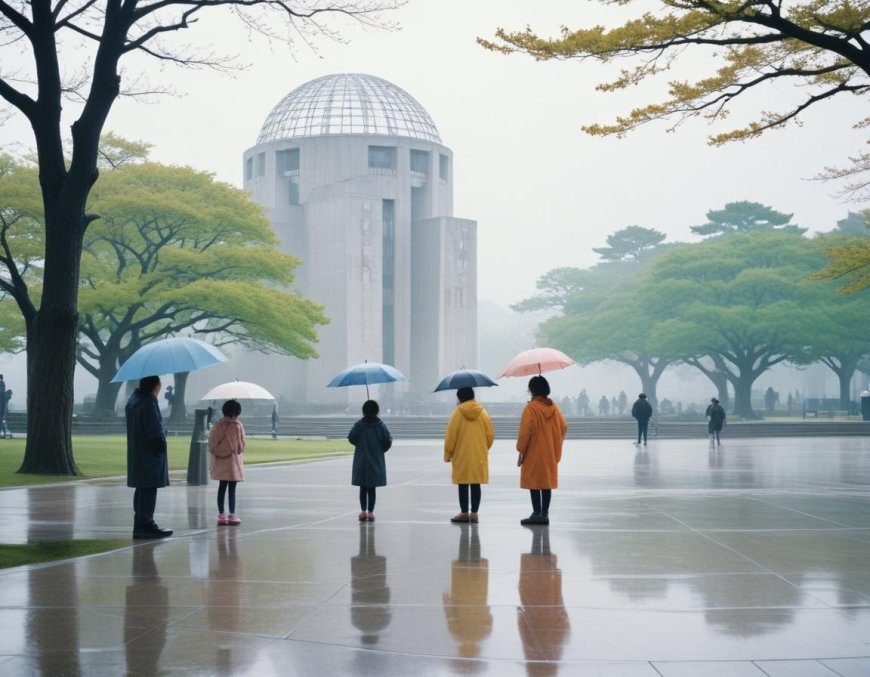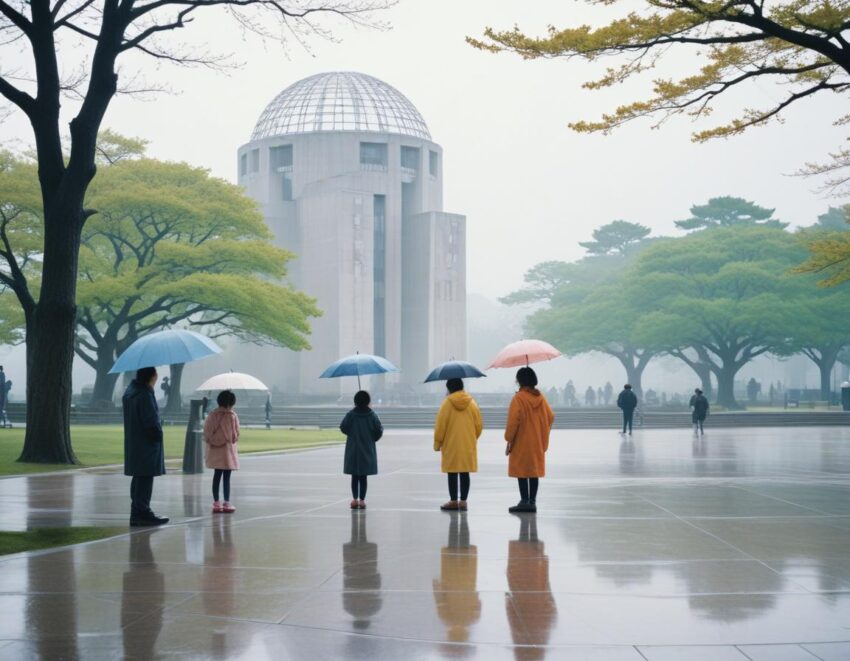Japan Stands Alongside US, Russia, Israel, Germany, Poland, and Vietnam as a War Tourism Destinations for Tourists


Japan stands alongside US, Russia, Israel, Germany, Poland, and Vietnam as war tourism destinations for tourists who seek to connect with history. These countries hold sites that speak of courage, sacrifice, and lessons from the past. In Japan, Hiroshima and Nagasaki offer deep reflection on the impact of nuclear war. In the US, Pearl Harbor and Gettysburg tell stories of turning points in history. Russia’s Stalingrad memorials and Germany’s Berlin sites keep alive memories of decisive battles and global change. Israel’s Yad Vashem and Poland’s Auschwitz preserve the truth of the Holocaust, while the UK’s Normandy connections and war museums honour resilience. Together, Japan, US, Russia, Israel, Germany, Poland, and Vietnam form a powerful network of war tourism destinations for tourists. These places are not only stops on a journey — they are experiences that shape understanding and inspire peace.
Today, 9th August, is observed as Nagasaki Day, a date that holds deep meaning for Japan and the world. On this day in 1945, the city of Nagasaki was devastated by an atomic bomb, just three days after Hiroshima. Tens of thousands of lives were lost instantly, and many more suffered from injuries and radiation. Each year, Japan marks Nagasaki Day with solemn ceremonies, moments of silence, and calls for global peace. Survivors, known as hibakusha, share their stories to ensure the horrors are never forgotten. The Nagasaki Peace Park and Atomic Bomb Museum become focal points for remembrance, attracting visitors from around the world. As Japan deals with the weight of this history, it also leads the call for nuclear disarmament and peace education. Nagasaki Day is not only about remembering the past — it is about guiding the future towards a world free from the threat of nuclear war.
War tourism around the world is more than just travel. It is a journey into powerful places where history still speaks. From battlefields to memorials, these places tell stories of courage, tragedy, and hope. They keep alive the memory of those who fought, suffered, and dreamed of peace.
History still speaks in these destinations. It speaks through museums filled with personal belongings, through bullet-scarred walls, and through preserved ruins. It speaks through guides who share real stories, and through quiet fields where thousands are buried.
When travellers explore war tourism around the world, they discover that history still speaks in many languages — the language of loss, of resilience, and of peace. These journeys can change perspectives, strengthen empathy, and remind us all why history must never be forgotten.
Understanding War Tourism
War tourism means travelling to places linked with wars, battles, and conflicts. These places often have memorials, museums, or preserved battlefields. Visitors go there to learn, to remember, and to understand how war has shaped the world. It is not about celebrating war. It is about respecting history and honouring those who lived through it.
Today, war tourism is part of the travel industry in many countries. Some sites are very famous and receive millions of visitors every year. Others are smaller but still carry deep meaning for the people who visit them.
Hiroshima, Japan – A City of Peace
Hiroshima is one of the most important places in war tourism. On 6 August 1945, it became the first city to suffer an atomic bombing. The Peace Memorial Park, the Genbaku Dome, and the Peace Memorial Museum tell this story with care and respect. The exhibits show personal items, photographs, and survivor stories. Every year, millions visit to learn about the horrors of nuclear war and to send a message for peace.
Nagasaki, Japan – Remembering 9 August
Just three days after Hiroshima, Nagasaki faced the same tragedy on 9 August 1945. The Nagasaki Atomic Bomb Museum and the Peace Park honour the lives lost. Statues, memorial halls, and the iconic Peace Statue all remind visitors of the need to prevent such destruction in the future.
Europe – Lessons from Two World Wars
Europe is filled with war tourism sites, from the beaches of Normandy to the concentration camps of Poland.
Auschwitz-Birkenau, Poland
This is one of the most visited Holocaust memorials in the world. It preserves the remains of the Nazi death camp where over a million people were killed. Visitors walk through the barracks, gas chamber remains, and see personal belongings left behind.
Normandy, France
The Normandy American Cemetery overlooks Omaha Beach, one of the D-Day landing sites in 1944. The white headstones, perfectly lined, remind visitors of the high cost of freedom.
Verdun, France
The Verdun battlefield from World War I is a place of heavy history. The Verdun Memorial, forts, and ossuaries tell the story of one of the longest battles in history.
Berlin, Germany
The Topography of Terror is built where the Nazi Gestapo headquarters once stood. It documents the rise of Nazi power and the crimes committed during the war.
Balkans – Recent History in Bosnia and Croatia
In Sarajevo, Bosnia & Herzegovina, the Tunnel of Hope Museum shows the underground passage used during the 1992–95 siege. The Srebrenica–Potočari Memorial is a quiet place where visitors can reflect on the genocide that took place there. In Croatia, the Vukovar Memorial Centre tells the story of the siege of the city in 1991.
Russia – Stalingrad’s Story
In Volgograd, once called Stalingrad, the Mamayev Kurgan memorial complex stands as a tribute to the Battle of Stalingrad. The huge statue, “The Motherland Calls,” and the museum on site show how this turning point in World War II shaped the outcome of the war.
Middle East – From Ancient to Modern Conflict
Yad Vashem, Israel
This is Israel’s official memorial to the victims of the Holocaust. It combines exhibitions, archives, and monuments to keep history alive.
Tehran’s Holy Defence Museum, Iran
This large complex focuses on the Iran–Iraq War of the 1980s, showing the human and military sides of the conflict.
East and Southeast Asia – War’s Impact Across Generations
Nanjing, China
The Nanjing Massacre Memorial Hall remembers the atrocities of 1937, when Japanese troops killed hundreds of thousands of civilians.
Korean DMZ, South Korea
The Demilitarised Zone is one of the most unusual tourist spots in the world. Visitors can see the Joint Security Area at Panmunjom, where North and South Korean soldiers face each other.
Vietnam
In Ho Chi Minh City, the War Remnants Museum covers the Vietnam War from the Vietnamese perspective. The Củ Chi Tunnels nearby show the underground network used by fighters.
Cambodia
The Tuol Sleng Genocide Museum in Phnom Penh and the Choeung Ek Killing Fields are powerful reminders of the Khmer Rouge regime’s brutality.
Thailand
The Hellfire Pass Interpretive Centre and the “Death Railway” in Kanchanaburi recall the suffering of Allied prisoners during Japanese occupation in World War II.
Africa – Stories of Struggle and Survival
Rwanda
The Kigali Genocide Memorial is the resting place for more than 250,000 victims of the 1994 genocide. It is also a centre for education and remembrance.
Egypt
El Alamein on the Mediterranean coast was the site of a key World War II battle. Its military museum and cemeteries honour soldiers from many nations.
Oceania and the Pacific – Remote but Remembered
Papua New Guinea
The Kokoda Track is famous among Australians and Papua New Guineans. It was the site of a hard-fought WWII campaign.
Solomon Islands
The Guadalcanal American Memorial marks the fierce 1942–43 battles in the Pacific.
Palau
Peleliu Island holds battlefields and relics from one of the bloodiest Pacific battles of WWII.
The Americas – From Pearl Harbor to Gettysburg
Pearl Harbor, USA
The USS Arizona Memorial in Hawaii sits above the sunken battleship, marking the Japanese attack that brought the United States into World War II.
Gettysburg, USA
The Gettysburg National Military Park remembers the largest battle of the American Civil War. Monuments and preserved fields tell of the fight that turned the tide of the war.
Falkland Islands
The Falklands (Malvinas) battlefields and memorials mark the 1982 conflict between the UK and Argentina.
India – National Remembrance Sites
Jallianwala Bagh, Amritsar
This site remembers the 1919 massacre when British troops fired on unarmed civilians. The preserved bullet marks and memorials show the impact of colonial violence.
Kargil War Memorial, Ladakh
Built by the Indian Army, it honours soldiers who died in the 1999 conflict with Pakistan.
Wagah Border Ceremony
Every evening, Indian and Pakistani soldiers perform a military parade at the border crossing. It is both a tourist attraction and a display of national pride.
Why War Tourism Matters
War tourism is about more than visiting historical places. It helps people see the real cost of conflict. It encourages respect for those who suffered and died. It can also teach lessons about peace, understanding, and the dangers of hate.
When visiting, respect is essential. Dress modestly, follow local rules, and remember that for many people, these places are personal. They are not just history. They are part of living memory.
The Future of War Tourism
War tourism will always be sensitive. As time passes, more conflicts will move from memory into history. But for now, many sites are still connected to survivors and families. This means tourism must be careful, respectful, and honest.
In some countries, war tourism is growing. It brings income to local communities, funds preservation work, and keeps history alive. In others, it remains small, focused on education and remembrance.
What is clear is that war tourism will continue to attract travellers who want to learn, reflect, and understand the human cost of conflict.
The post Japan Stands Alongside US, Russia, Israel, Germany, Poland, and Vietnam as a War Tourism Destinations for Tourists appeared first on Travel And Tour World.






